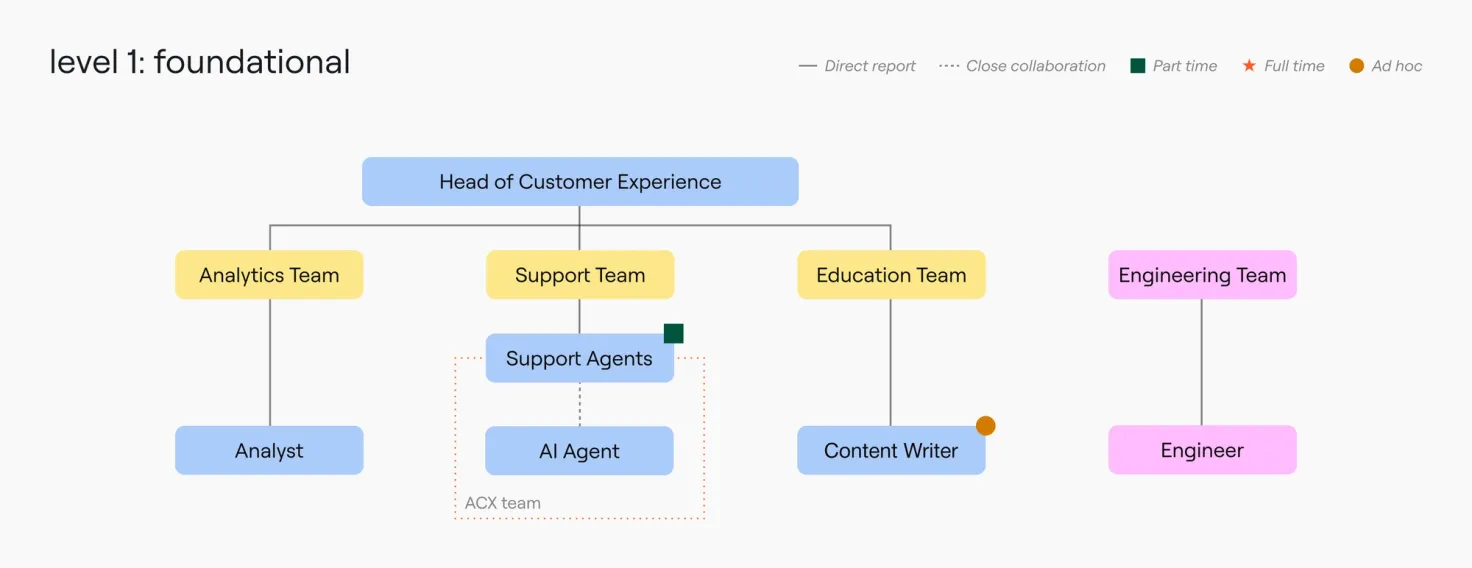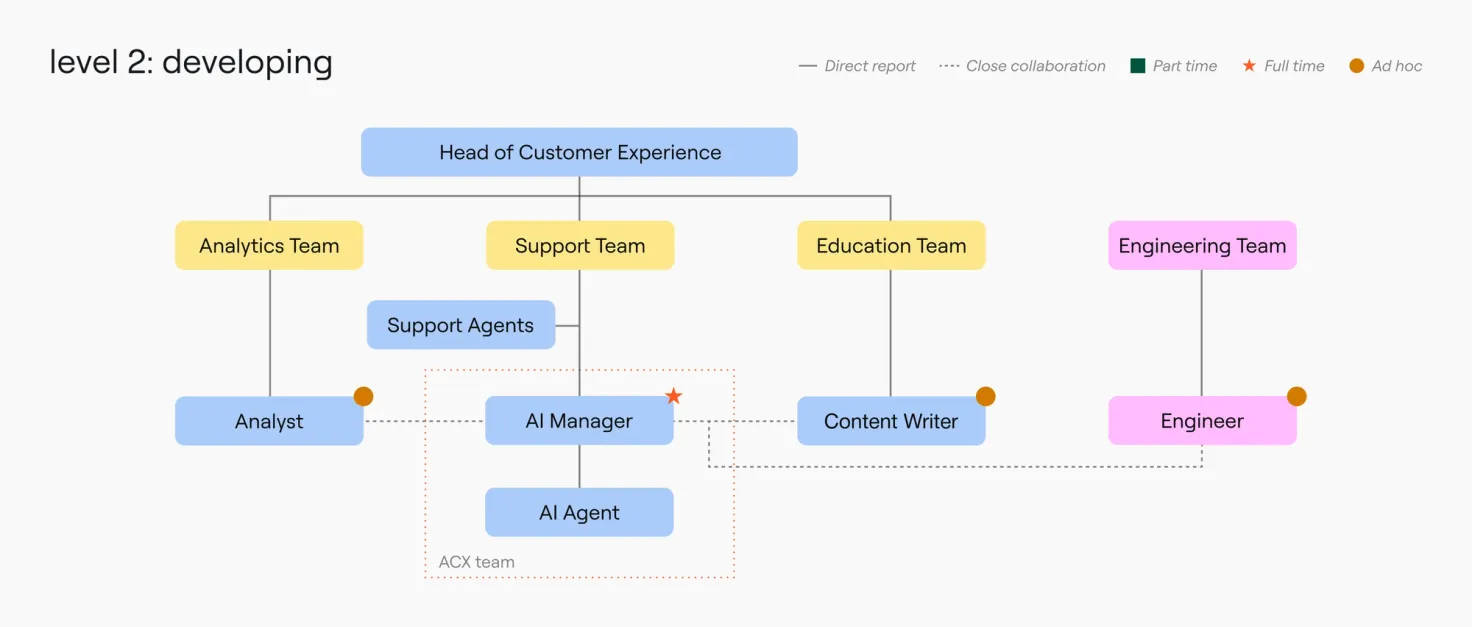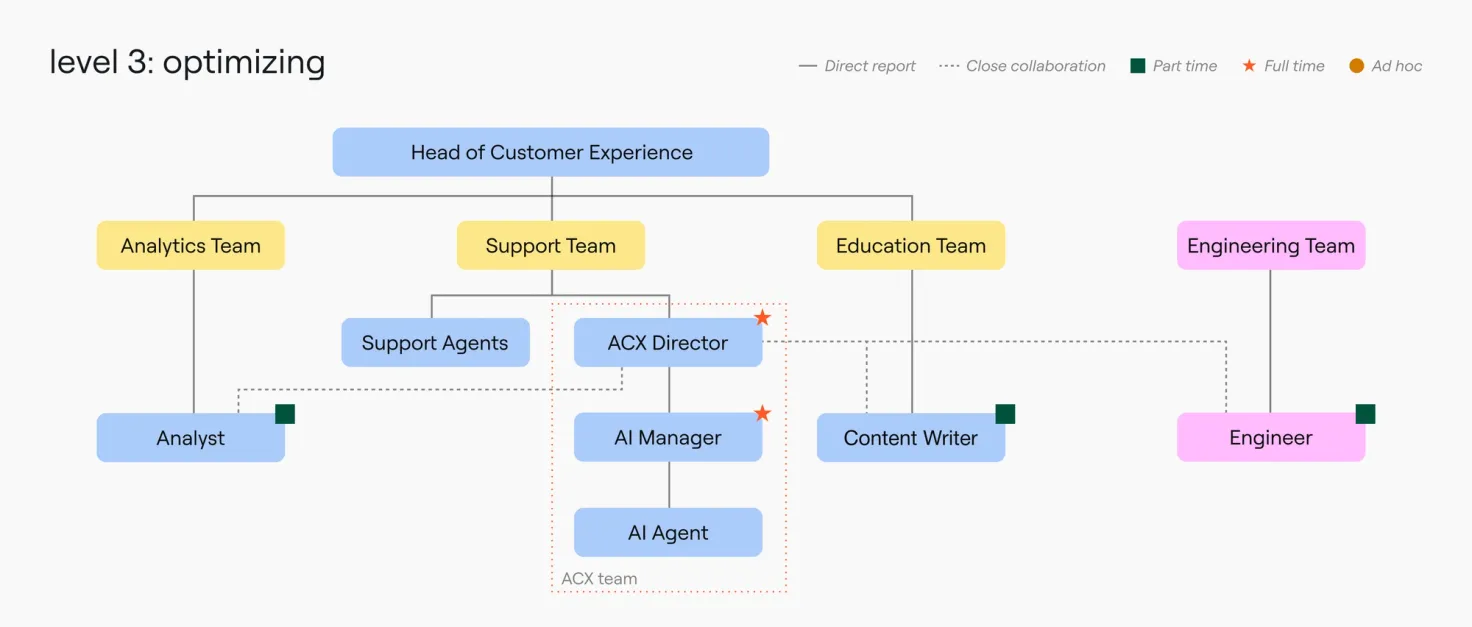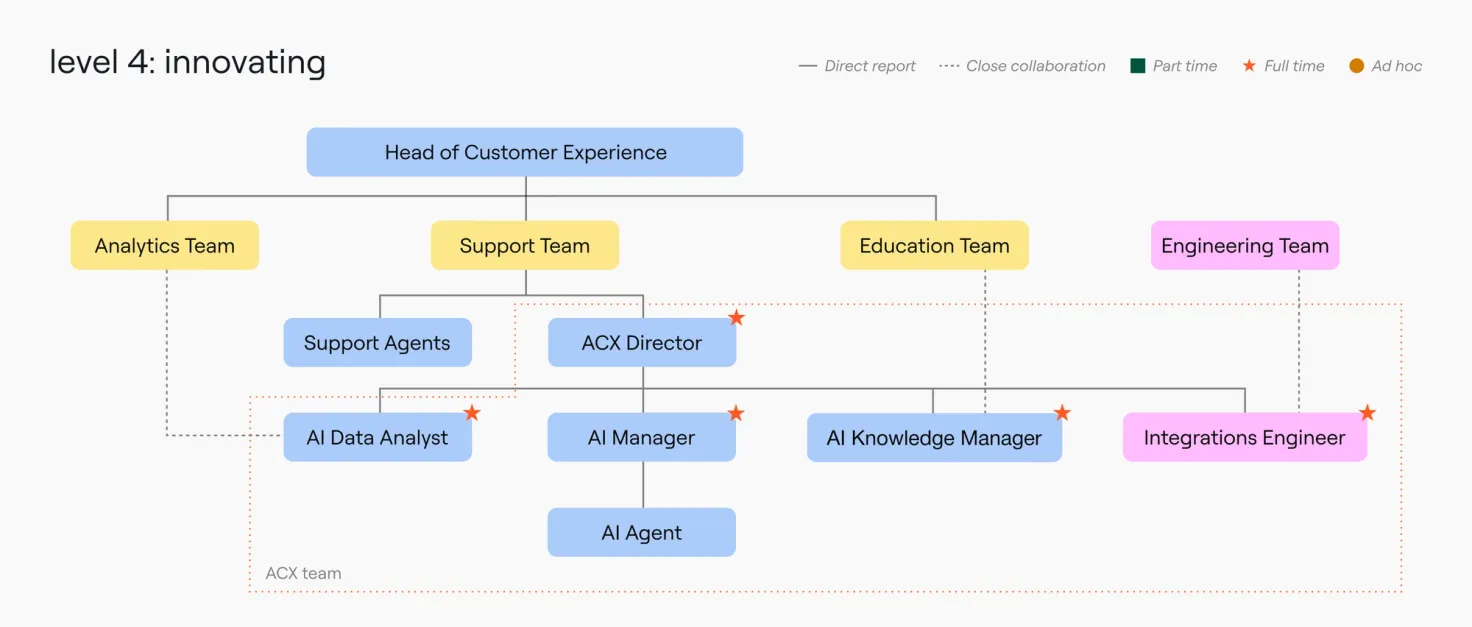
Phase Zero: How to build the business case for upgrading to an AI Voice agent
Get access to this exclusive session on-demand and discover how to turn every customer conversation into a competitive advantage.
Learn More

The leap from straight automation to agentic AI has completely changed customer service.
Just a few years ago, most AI deployments in support were simple FAQ bots. Now, AI agents are resolving tickets, pulling live data from backend systems, integrating across channels, and personalizing responses at scale. In many companies, AI handles the majority of customer interactions.
But while the tech has advanced, the organizational model hasn’t kept pace.
Too often, automation is still treated as a project—not a program. Ownership is fragmented. Performance is inconsistent. And as AI takes on more of the customer experience, the risks and missed opportunities grow.
The most innovative CX leaders are moving beyond this gap. They’re building Automated Customer Experience (ACX) teams —dedicated functions with clear roles, goals, and accountability for AI customer service .
This post explores how those teams are structured, and why investing in ACX leadership now will set the foundation for the long-term success of an AI customer service team .
In the early days of automation, it was common for AI performance to be “owned” off the side of someone’s desk—usually a Support Ops lead or Product Manager. That approach might get you through a pilot, but it doesn’t scale.
Why? Because running AI at scale is fundamentally different from running a human-only support team. AI agents aren’t set-it-and-forget-it—they require constant tuning, knowledge updates, backend integrations, regression testing, and performance analysis. And as the volume of AI-handled interactions grows, the cost of unmanaged or poorly performing AI compounds quickly.
As AI takes on more responsibility in customer service , the org structure around it must evolve.
That means building a dedicated ACX program team—one with clear ownership, distinct roles, and the right mix of operational, technical, and strategic talent. Here’s how leading organizations are structuring these teams:
The ACX Director leads the entire AI customer service program. They align AI automation strategy with broader CX and business goals, manage cross-functional relationships (Product, Engineering, Support), and drive the long-term vision for ACX. This role typically reports to the VP of CX or COO.
The AI Manager is responsible for day-to-day AI agent performance. They own optimization cycles: tuning workflows, updating training data, refining knowledge inputs, monitoring AR%, and leading regression testing. The AI Manager works closely with Engineering, Product, and Ops to continuously improve the AI’s effectiveness.
The AI Knowledge Manager ensures the AI agent always has the most accurate and up-to-date information. They structure and maintain knowledge source s, optimize how the AI consumes content, and partner with Product and Content teams to manage knowledge updates.
The Automation QA Specialist owns the testing and quality assurance process for AI outputs. They build regression tests, monitor LLM behavior, flag edge cases, and ensure AI quality scales with interaction volume.
The AI Data Analyst provides visibility into AI performance and informs optimization strategies. They analyze AR%, containment trends, CSAT on AI interactions, error rates, and other key KPIs—helping the ACX team make data-driven decision s.
The Integrations Engineer builds and maintains the APIs and technical enablers that power advanced AI use cases. They ensure the AI agent can access necessary data and complete transactional workflows (e.g. issuing refunds, checking order status).
Learn how to make strategic tech investments that actually improve AI performance and customer satisfaction.
Get the guide
Building this kind of ACX team isn’t just about staffing for today’s volume. It’s about designing an organizational structure that can adapt and scale as AI becomes an even more integral part of your customer experience.
As the maturity model shows, teams that invest in formal ACX leadership early outperform their peers—not only in cost savings, but in customer experience and innovation. And while every company’s journey will look different, one thing is clear: the future of support will be led by teams built to manage AI at scale.
Automated Customer Experience (ACX) is a fundamentally new way of thinking about customer service . It’s not about bolting AI onto existing workflows—it’s about building an organization where AI is a first-class channel for resolution.
In an ACX model, AI agents aren’t side projects or self-serve add-ons. They are fully integrated team members—handling a growing share of volume, interacting with core systems, and delivering outcomes that drive both efficiency and customer satisfaction.
Understand where your current customer service operation stands and know exactly what’s needed to launch and grow a successful AI Customer Experience (ACX) program.
Get the guide
But scaling toward this future requires a new org structure . As automation grows, so do the risks of unmanaged AI:
To avoid these pitfalls—and unlock the true potential of automation—leading companies are building ACX teams: dedicated groups with clear roles, accountability, and a continuous improvement mindset around AI customer service.
Ada’s ACX Maturity Model provides a roadmap for this evolution. It outlines how customer service organizations progress from early experimentation to AI-first operational excellence—and what roles and investments are required at each stage.
Most organizations begin at a foundational stage, where AI is deployed in limited pilots—often focused on FAQs or simple transactional flows. Ownership is informal, typically managed by someone in Support Ops or Marketing as a side responsibility.
The focus at this stage is on proving value while minimizing risk, with basic metrics like containment rate and deflection informing early success.

As results emerge, teams shift into a developing stage, where AI begins handling meaningful customer volume. A single person—often an AI Manager or a de facto owner—starts to formally take charge of performance.
The focus expands from coverage to quality, with early investments in knowledge optimization, tuning, and performance monitoring. Metrics evolve to include more sophisticated resolution tracking and early AR (Automated Resolution) benchmarks.

In the optimizing stage, AI agents resolve a substantial share of total customer interactions. Dedicated ownership is non-negotiable: an AI Manager formally owns performance, supported by specialists such as an AI Knowledge Manager and QA lead.
AI is fully integrated with backend systems and workflows, with formal training cycles and regression testing in place. Success is measured by Automated Resolution Rate (AR%), CSAT on AI interactions, and ongoing cost savings.

Finally, innovating organizations treat AI as their primary customer service channel. They operate fully staffed ACX teams—led by an ACX Director, with roles including AI Manager, AI Knowledge Manager, Automation QA, AI Data Analyst, and supporting engineers.
The focus shifts to continuous innovation: driving highly personalized, scalable AI experiences across regions, channels, and products. Advanced KPIs like AR-driven NPS , lifetime value impact, and AI ROI become central to leadership reporting.

Across all stages, one truth holds: organizations that invest in dedicated ACX leadership see compounding returns—not just in efficiency, but in customer experience, agent satisfaction, and long-term differentiation.
It can be tempting to view ACX maturity as something to tackle “once AI scales.” But the truth is, AI only scales well when it’s structured well.
In the absence of formal ownership and dedicated roles, AI performance plateaus—and in many cases, declines. Without an AI Manager continuously tuning performance, an AI Knowledge Manager maintaining content quality, or an Automation QA Specialist catching regressions, AI agents lose effectiveness fast. The risks of inconsistent brand voice, customer frustration, and operational inefficiency grow with volume.
On the flip side, companies that staff their ACX team early see compounding gains:
Companies that wait to build out their ACX team risk falling behind—not just in efficiency, but in customer experience and brand differentiation.
The evolution is already underway. Across industries, AI agents are taking on more volume, delivering faster resolutions, and driving higher customer satisfaction. But behind every successful AI program is a team that ensures the system is constantly learning, improving, and aligned to business goals.
ACX isn’t a side project. It’s the future operating model for customer service.
Forward-looking organizations are building ACX leadership today—investing in AI Managers, AI Knowledge Managers, Automation QA, and more. They know that a high-performing AI agent is not an accident—it’s the result of structured ownership and continuous optimization.
If your AI agent is already scaling, now is the time to staff the team that will manage it—and lead the next era of customer experience.
Don’t let an outdated team structure hold you back. Start building a customer service team that uses both AI and human agents to their fullest potential.
Get the guide